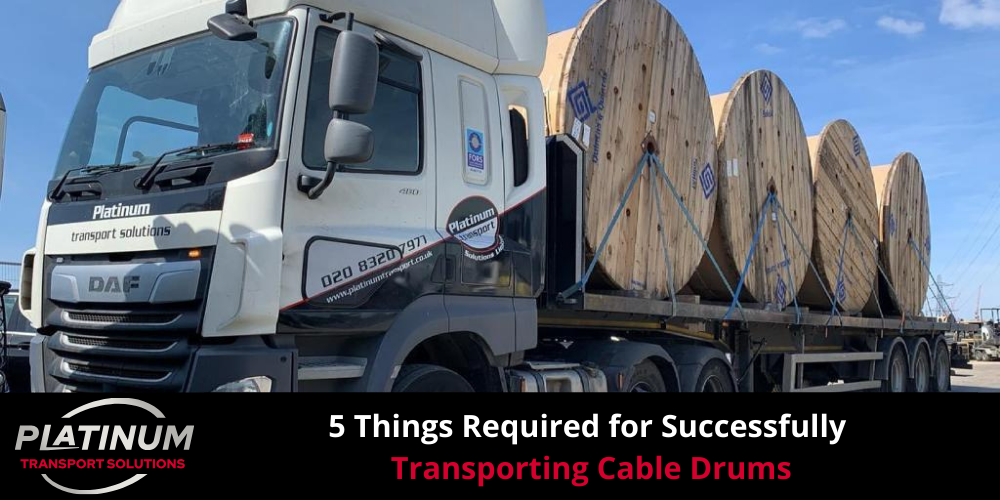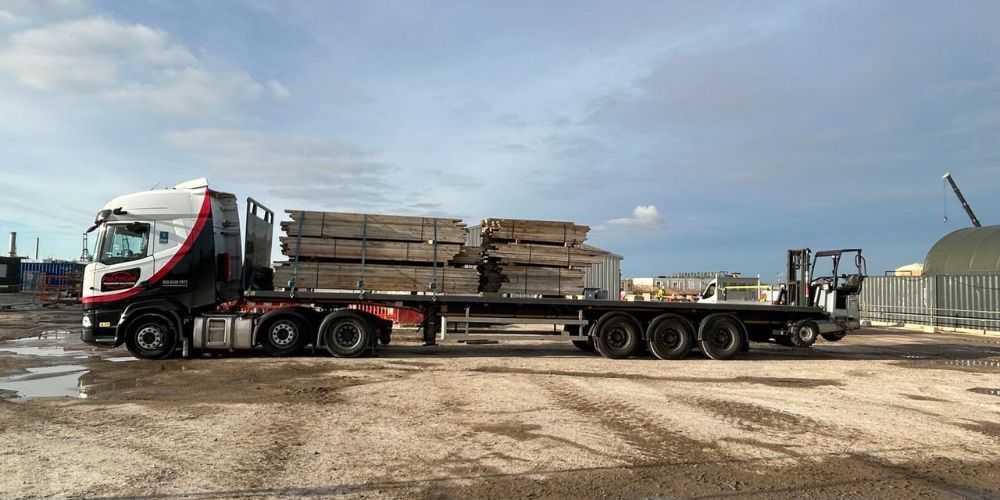
5 Things Required for Successfully Transporting Cable Drums
The procedure for transporting cable drums in and around London, and beyond, is complicated and requires much experience, equipment, and careful planning. Whether it is power cables, fibre optics, or some other heavy-duty cabling, the question that generally preoccupies the customer is: How do the drums reach their destination? This article discusses the five critical elements needed to transport a cable drum successfully, from choosing the right vehicles to route planning nuances, and why Platinum Transport Solutions is the perfect choice for your delivery.
Appropriate Transportation Vehicles
The first and most important element is the choice of transport vehicles. Cable drums are heavy and oversized, and they often require specialised flatbed trucks or trailers designed to hold their size and weight.
Giant drums may require low-loader trailers for stability during transport. Such trailers have lower centre allowances that help reduce toppling incidences. The vehicle should also be fitted with appropriate anchoring points, which hold the drums in place to prevent movement that can cause accidents or damage.
Proper Lifting Equipment
After choosing the right equipment and vehicle, next in line is picking the correct equipment for lifting. Cable drums cannot be loaded by hand into a transport vehicle since they are often far too large and heavy. Cranes, forklifts, or specialised drum-handling equipment must be used safely when lifting them onto a lorry.
It’s important to ensure the equipment can handle the weight of the hoisted drums. Overloading a crane or fork truck is a disaster waiting to happen, from equipment failure to serious injury. The proper techniques are in place to ensure that the drum is slung with balanced weight and no slippage or damage during the lift.
Appropriate Drum Handling Techniques
Different types of drums require expert handling, with knowledge of exactly what to do with each type. Mishandling cables can damage the cables mounted on a given drum and cause costly repairs or total replacement.
Some key factors to consider include: do not roll the drums over rough surfaces, since this may result in loosening or tangling of the cable in the drum. If it is required to move drums physically, a drum dolly or trolley is recommended to prevent damage. Coupling of the drums should always be kept upright; continuous laying on their sides would cause deformation of the drum or the cable inside.
Securing the Drums
After loading, the cable drums must be secured to the transport vehicle to prevent movement during transit. Unsecured Drums can lead to shifting, accidents, damage to cargo, and possible injury to people handling the load.
Heavy-duty ratchet straps, chains, or tensioning devices can be installed to prevent the drums from moving around. Platinum Transport Solutions always make sure to check and tighten the securing mechanisms before the journey and periodically during transport. Additional stability is provided when the drums are placed against a solid backing, such as a bulkhead or other drums.
Route Planning and Safety Considerations
Another essential prerequisite for safely delivering cable drums is careful route planning. This involves selecting the most efficient path and considering various safety factors, including navigating narrow London streets and complex one-way systems. This is where our local knowledge is invaluable.
Clearances
One of the most important considerations is the load’s height and width clearance. Moving those large drums of cables could be hell with low bridges, narrow roadways, or sharp turns. Sometimes, a special permit may be necessary, or alternative routing may even be required.
Regulatory Compliance
Transportation of bulky and heavy consignments like cable drums requires compliance with various regulations. These include weight limits, securing permits for oversized loads, and observing all safety standards by the transport company. Failure to comply results in fines, delays, or even confiscation of the load.
Weather Considerations
Weather conditions can also drastically affect the movement of cable drums. Windy, rainy, or icy road conditions may make driving hazardous, making it very hard to keep the vehicle under control and the load safe. The weather forecast should be checked regularly, and in bad weather conditions, a decision should be made whether to delay the journey.
Best Example for Transporting Cable Drums

One of our numerous examples of successful cable drum transportation is when Platinum Transport Solutions, one of the biggest logistics industry companies in the United Kingdom, recently executed a complicated project of delivering oversized cable drums to narrow streets in the centre of London. Our expert forwarding skills and commitment to using specialised vehicles and all other equipment expedited the delivery of the drums on time without any hitch. This project certainly underlined our knowledge and experience utilising: careful planning, the proper technology, and understanding the services and logistics.
Conclusion
Platinum Transport Solutions is one of the foremost transport services in the UK, if you are seeking a trusted partner for this complicated process. We have years of experience in the logistics business and have lots of credibility to handle complex projects successfully.
You can trust us with all your concerns, as we will shift your cable drums quickly and without issue. Our company’s experience includes freight forwarding, specialised company transport, and logistics solutions from end to end.
